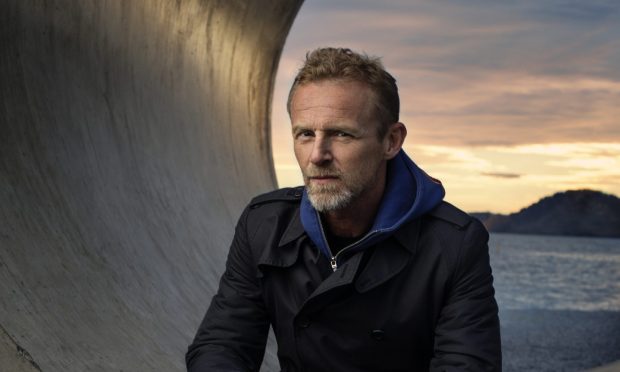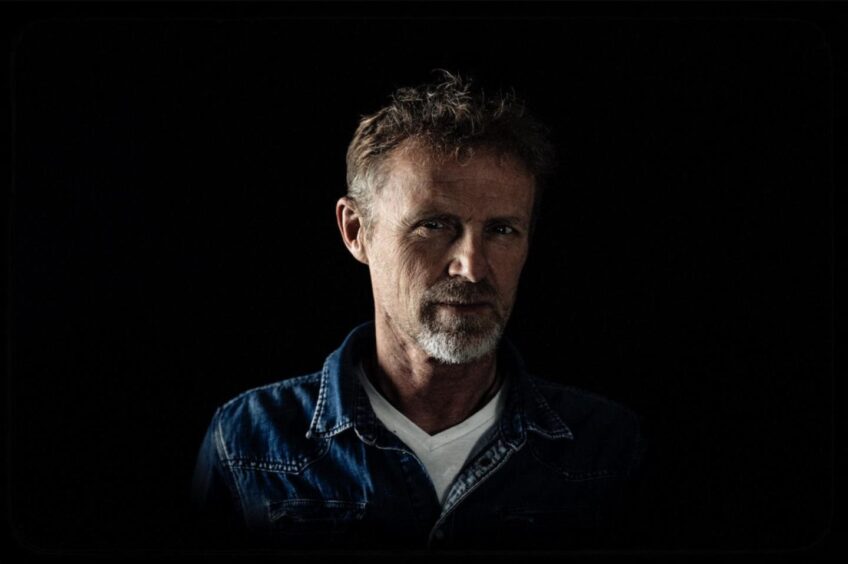
Whether it be works inspired by shared rugged landscapes and unpredictable climates, or our respective genres of Nordic and Tartan Noir crime thrillers, Scotland and Norway have long shared strong cultural ties.
Fittingly for a man who has sold millions of books worldwide, best-selling author Jo Nesbø, puts it perfectly, describing us as ‘national soulmates’.
As the Norwegian crime writer heads across the North Sea to meet fans of his page-turner thrillers, he knows he’s almost coming to a home from home.
“I always look forward to coming to Scotland,” he said. “There are so many similarities.
“My brother lived in Aberdeen and we brought the whole family over for Christmas one year and it was definitely the best I’ve had away from home.
“That speaks volumes about Scots because it was raining all the time!”
As vocalist and songwriter for Norwegian rock band Di Derre in his spare time, he also has some Scots musical inspiration.
Alongside the storytelling of Nick Cave, Bruce Springsteen and Bob Dylan, he’s partial to a bit of The Bluebells.
“I’m sure that my generation of writers are as inspired by movies and music as we are by other novels,” Jo said.
“A big inspiration for me in the 80s were The Bluebells. As students we were really into British music, Teenage Fanclub were also big favourites.
“We invited Bluebells over to Bergen and they came and played and were quite overwhelmed, I think, because we treated them as superstars!”
Jo, 64, comes to Scotland this week for an event where he’ll discuss new novel Blood Ties, which sees him break from his best-selling Harry Hole series.
A follow-up to 2020’s The Kingdom, the thriller explores the relationship between Roy Opgard and his one year younger but smarter and more successful brother Carl.
Set in the small Norwegian village of Os, it’s a tale of family, loyalty, and the lengths people go to cling to power.
“They’re very different from my other novels,” Jo said. “I don’t take it for given that people are happy when I write outside my arena, but they’ve really embraced it and taken to the characters, which made me really happy.
“My grandparents lived in places like Os, and we’d go there every Christmas and summer holiday. With the band tours, we’d spend so much time in small places.
“It’s a special atmosphere, combining people taking care of each other but also seemingly knowing everything about each other. You feel safe and claustrophobic at the same time.”
Considered one of the kings of Nordic Noir, Jo has sold over 60 million books worldwide.
He has a theory why the darkness of crime fiction still enchants, even in a world where a bit of escapism from the gloom is tempting.
“During the bombing of London during World War II, when people hid in shelters, the most popular literature was crime fiction.
“The Agatha Christie type of crime fiction, you feel kind of safe. It’s not about chaos. They start after the crime has taken place, a murder scene. What you experience in the crime novel is actually order being restored.
“It’s more reassuring in a world that feels chaotic. I guess that’s part of the reason. In Blood Ties though, I’m afraid there is more chaos!”
Jo’s own life story is as fascinating as the words he puts on page. His early passion was football, playing for Norwegian side Molde at 17 and dreaming of a move to play for his beloved Tottenham Hotspur.
But a cruciate injury put paid to that, and he’d go on to study and work in economics.
Suffering burnout, he flew to Australia and worked on a suggestion from a publisher that he write a book describing life on the road with his band.
It strayed into the first plot for a novel and a writing career was a natural progression, coming from a family where storytelling was important.
“Whenever my family gathered, we had this tradition of old stories being retold,” Jo said. “It was like a competition taking turns to add interesting new details and make it more compelling, more juicy.
“Listening to my relatives telling stories was my writer’s school.”
Just like those stories told growing up, Jo has now seen many of his works adapted and modified for TV and film versions.
2017 film The Snowman starred Michael Fassbender, and Killer Heat comes to Prime Video next week featuring Joseph Gordon-Levitt and Richard Madden.
“It’s not going to be your story coming to life, but the director’s and the actors’,” Jo says of the adaptations.
“You have to be open for that. If you hope to see your vision of the book, you’re bound to be disappointed. The story can be the starting point of a great movie, but nothing more than that.”
Jo is, however, at the helm as show-runner for a new Netflix series, titled Jo Nesbø’s Detective Hole, due to hit our screens in 2026 with a star-studded cast including Tobias Santelmann and Joel Kinnaman.
“It’s hard work; a steep learning curve, but quite fun,” Jo said. “You never know it’s going to work until you have it edited, but right now we’re in the middle of shooting and having a great time.
“Everybody around me is very understanding and supporting. It’s strange to be on set with so many talented and professional people who really know their job and to be their boss and not really know mine!”
With so many plates to spin, it’s a surprise that Jo has any time. He says he never plans things around his writing schedule, preferring to put pen to paper whenever he has spare time.
His best ideas, he reckons, come when half asleep.
“It’s in bed at five in the morning, when your brain’s willing to follow any crazy idea,” he said. “From time to time it’ll take you places that are interesting and a couple of hours later you’re up, writing what you’d been half-dreaming…”
So is there a notepad on his bedside table?
“I use my phone and I use dictation,” he laughs. “If my partner is there, I wake her up but she’s so used to it she doesn’t mind!”
One place away from the writing is rock climbing, which Jo hopes to do on his visit to Scotland.
“When you climb, there’s nothing else going on in your head,” he said.
“It’s a break from everything else; from your job and your football clubs losing again!”
Jo Nesbø is in conversation with Denise Mina at the Greenside Church in Edinburgh on Monday 23rd September. Tickets at ToppingsBooks.co.uk

Enjoy the convenience of having The Sunday Post delivered as a digital ePaper straight to your smartphone, tablet or computer.
Subscribe for only £5.49 a month and enjoy all the benefits of the printed paper as a digital replica.
Subscribe